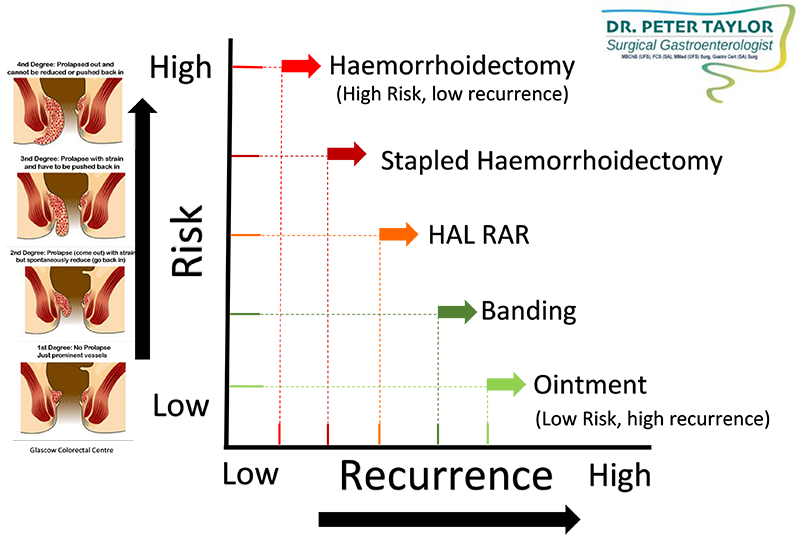
GIVE US A CALL TO SCHEDULE AN APPOINTMENT
GIVE US A CALL: 011 356 6425Perianal surgery for fistula, haemorrhoids
What is a Perianal Fistula?
There are glands inside the anus which produce mucus. If these glands get clogged, an abscess can develop. If the abscess isn't drained or it is inadequately drained, a perianal fistula may develop
A perianal fistula is a small tunnel that connects an abscess within the anus to an opening on the skin around the anus. Fistula can be divided into simple or complex tracts. Simple tracks are easier to treat, while complex tracts need long term treatment and are more difficult to eradicate.
What to expect in the procedure
In theatre, Dr Taylor performs an examination under anaesthesia to further determine if the fistulous is simple or complex. The most common procedure for perianal fistulas is the insertion of a seton (nonabsorbable nylon or silk suture). Other surgical options include plugs, clips or cutting out the tract.
Since the anal fistula is very close to the anal sphincter muscles, surgery is done very precisely to treat the fistula while protecting the anal sphincter muscles. The type of surgery you receive will depend on that type of fistulous tract you have.
For those fistulous tracts that do not heal with a Seton, a second surgery may be needed. This can be done through re-insertion of the seton as explained above, a lift procedure, or an advancement flap procedure
During an advancement flap surgery, Dr Taylor covers the fistula with a piece of tissue. The lift procedure is performed by opening the skin above the fistula, spreading the sphincter muscles and tying off the fistula. In some cases, a collagen plug or a clip is attached. This is done to heal and seal up a fistula as opposed to cutting the tract out. Biopsies may be taken during the surgery to exclude infection or other causes of fistula, including cancer or inflammatory bowel disease.
Risk Profile for Haemorrhoids treatment

Leave a message
